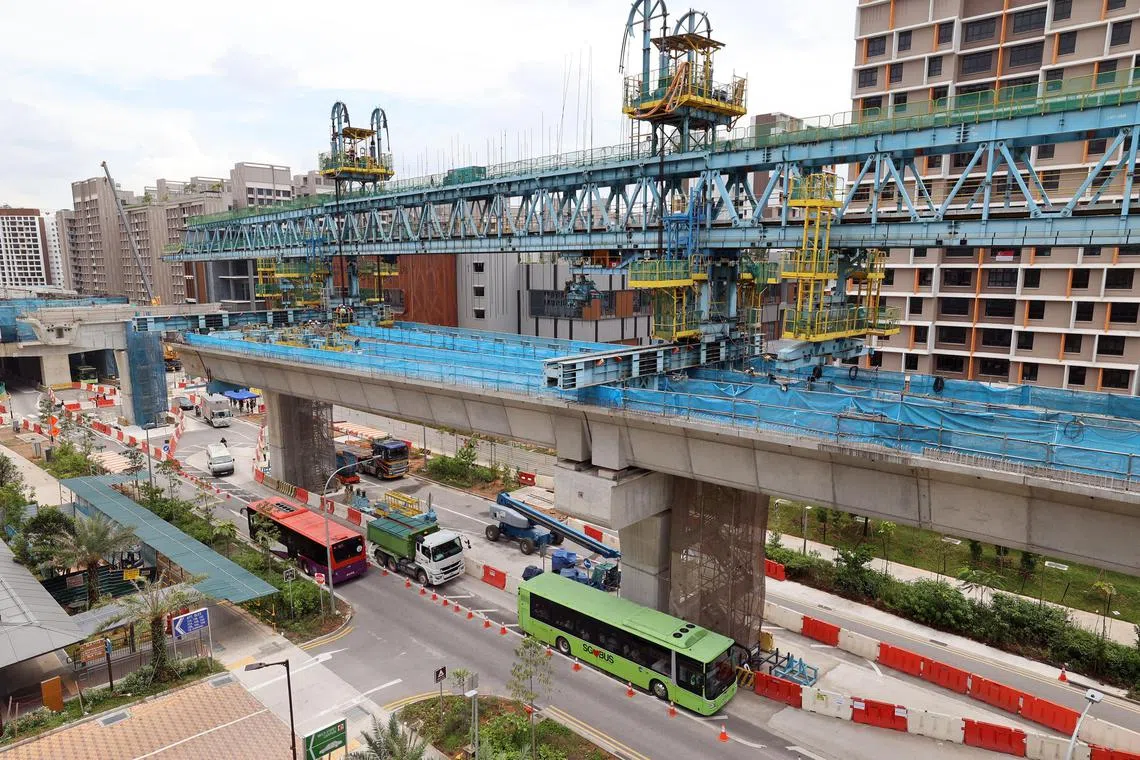$2.1b of green bond funds go to Jurong Region Line and Cross Island Line
Sign up now: Get ST's newsletters delivered to your inbox

The $2.1 billion allocated for the projects was raised from the 50-year Green Singapore Government Securities (Infrastructure) bond.
PHOTO: LIANHE ZAOBAO FILE
Follow topic:
SINGAPORE – Funds totalling $2.1 billion that were raised by government-issued “green” bonds have been allocated to the Jurong Region Line and Cross Island Line that are now under construction.
Both lines support the “sustainable living” pillar of the Singapore Green Plan 2030,
This pillar aims to have public transport used by 75 per cent of commuters during peak hours
“This is a key enabler to achieve the ambitious goal of significantly reducing land transport emissions in absolute terms, in alignment with Singapore’s net-zero target by 2050,” the MOF said.
The Jurong Region and Cross Island lines are estimated to result in total carbon savings equivalent to taking at least 22,000 cars off the roads when fully operational.
The $2.1 billion allocated for the projects was raised from the 50-year Green Singapore Government Securities (Infrastructure) bond, which reopened in September 2023,
The $2.1 billion comprises $1.7 billion from the first tranche of bonds issued in August 2022 and $400 million from the reopened tranche.
The remaining funds from the reopened tranche are expected to be fully allocated by the end of the 2025 financial year.
Ms Indranee Rajah, Minister in the Prime Minister’s Office and Second Minister for Finance and National Development, said in the report: “The Singapore Green Bond Framework remains a key pillar of Singapore’s efforts to channel investments into projects that will advance our sustainability efforts and contribute towards our net-zero goal.”
It was announced in Budget 2022 that the Government will issue up to $35 billion of green bonds by 2030 to fund public sector green infrastructure projects.
Eligible categories include those revolving around renewable energy, energy efficiency, green buildings, clean transportation and sustainable water and wastewater management.
These projects are expected to help Singapore transition to a low-carbon economy, contributing to the climate-related and environmental goals set out by the Government.
Ms Indranee added in the report: “Our fight against climate change requires collective effort and urgent action, and critically, we have to marshal the resources for change. Green finance plays a pivotal role in driving the global transition to a low-carbon future.”
The MOF report, the second it has issued relating to the green bonds, noted that the land transport sector accounts for about 15 per cent of carbon emissions here.
“One key strategy to reduce carbon footprint in this sector is encouraging greener commutes, among other initiatives such as vehicle electrification and greening infrastructure and operations,” the ministry said. “Expanding our public transport infrastructure and electric rail network is a core element of this strategy.”


